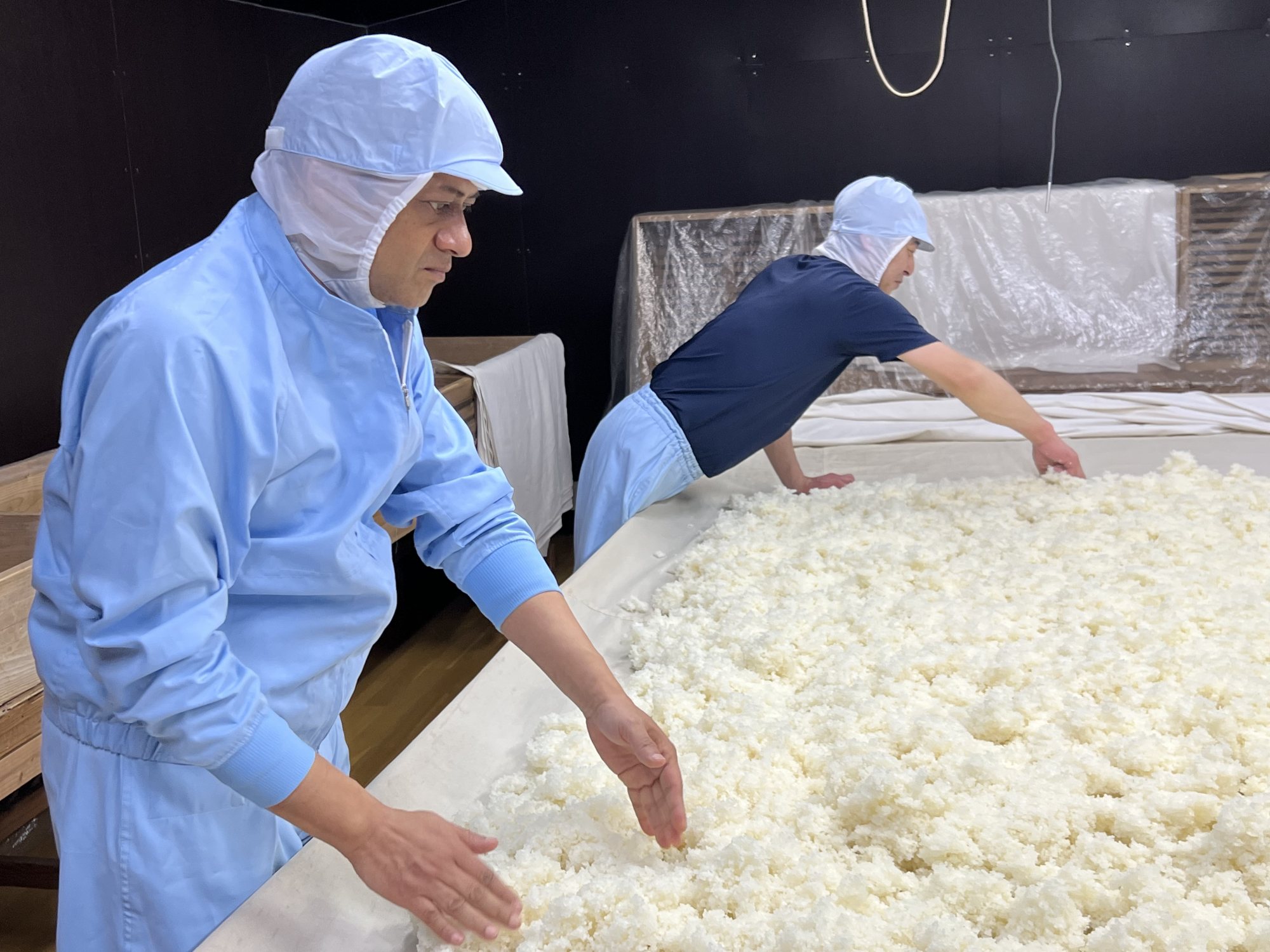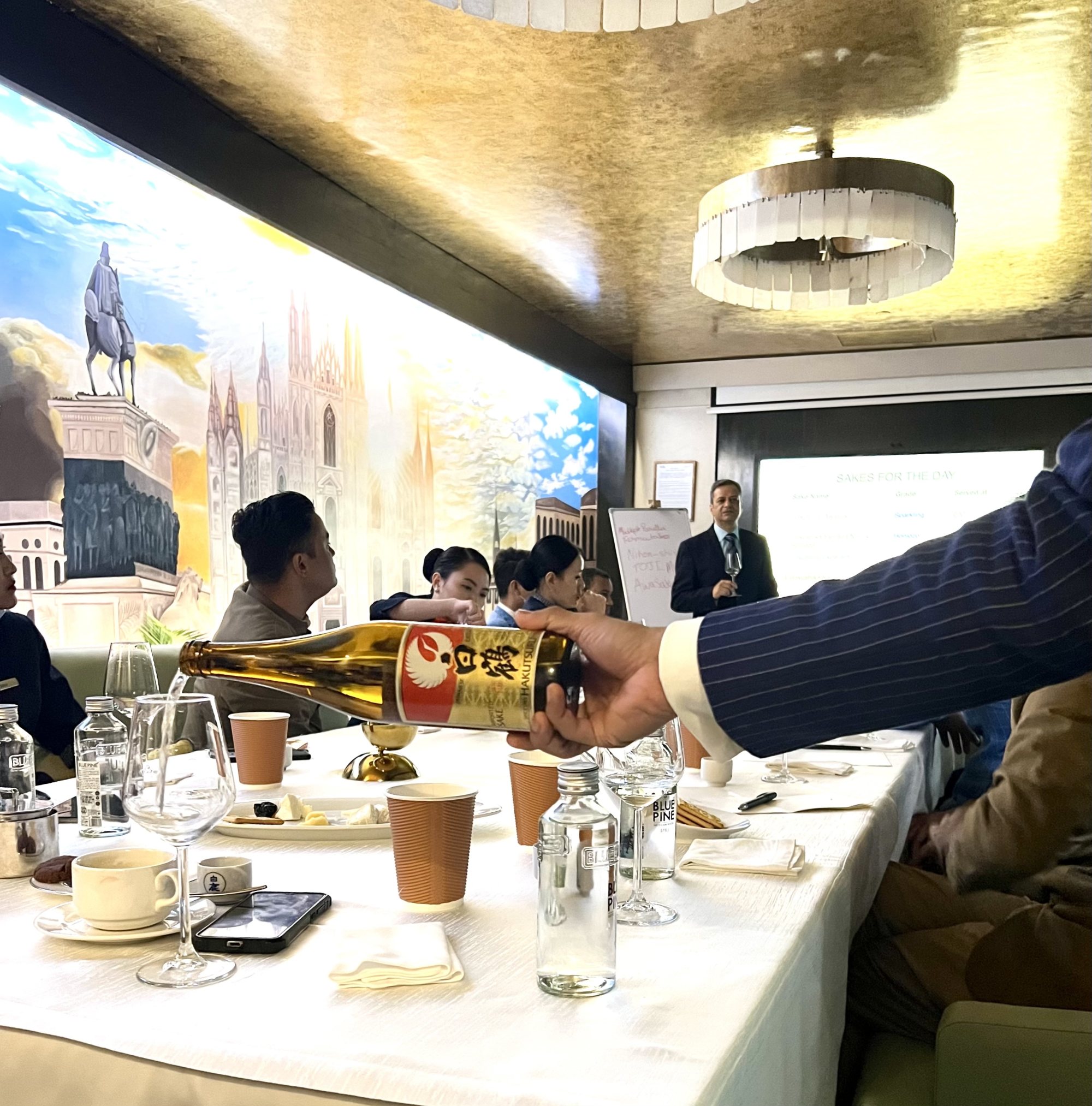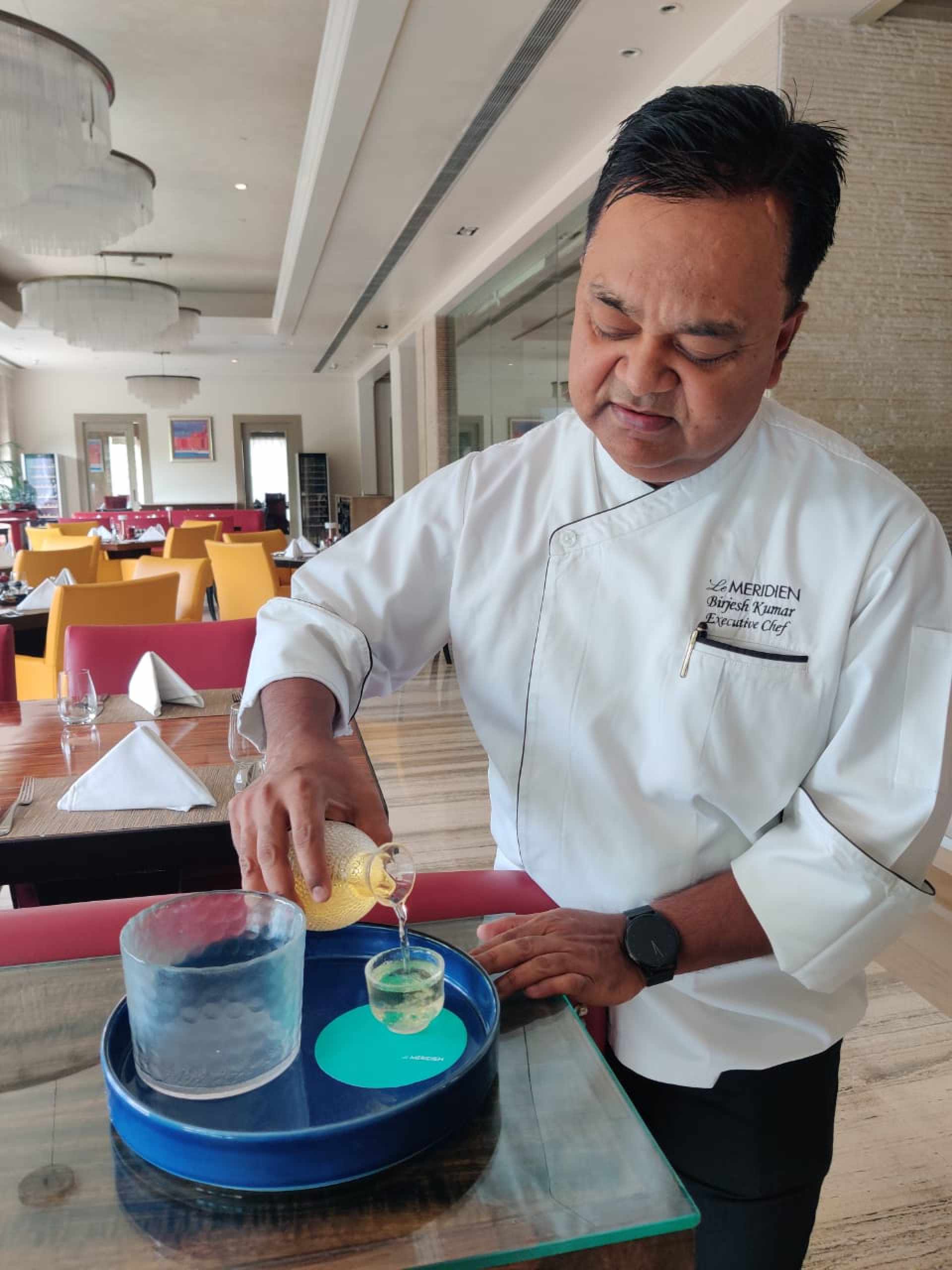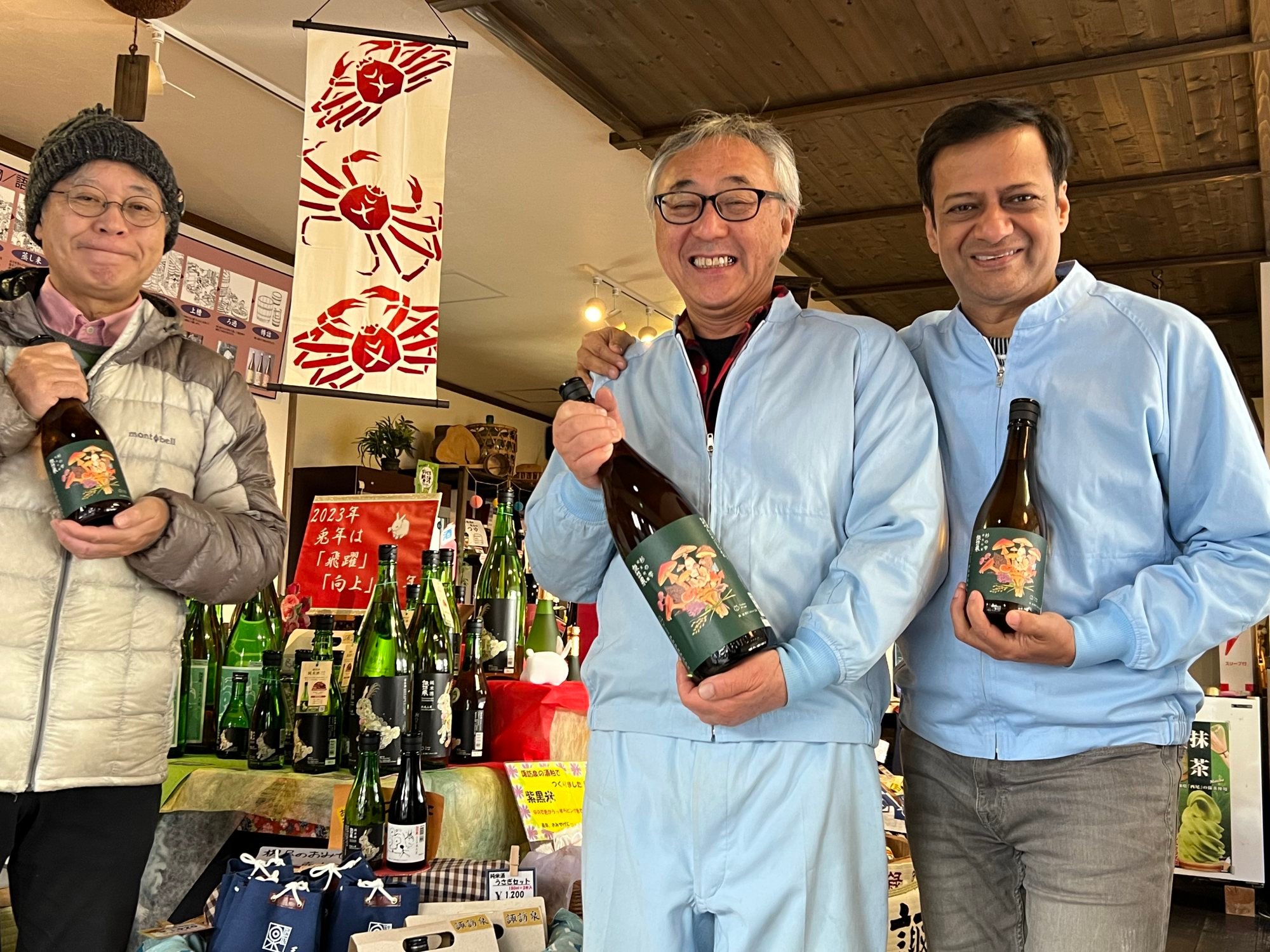Prateek Mohanty, a Delhi-based businessman, loves his weekend tipple sessions with his friends. Lately, however, these boozy gatherings have witnessed a twist. Instead of featuring whisky, beer and vodka, the group’s repertoire increasingly includes bottles of sake.
“I love the refreshing taste of sake, which is lighter, healthier, and can also be paired with Indian food,” says Mohanty. “My friends enjoy it too; our favourites are the Hakushika Junmai Taru sake and the Hakutsuru Junmai.”
Sake – rice alcohol made from rice, water, koji (rice mould) and yeast – has a 2,000-plus year history and is an intrinsic part of Japanese culture.
The drink is now finding fans in India. A growing Japanese expat community, more travellers looking for culinary experiences, increasing imports of sake, more restaurants offering it, and independent sommeliers organising tasting sessions have all fuelled the sake trend.

“There’s a palpable interest in sake across India. The versatile and mellow drink can be paired with richer, fattier and often dairy-based Indian food, which has helped its popularity,” explains Ravi Joshi, co-founder of Sake Club India (SCI).
“Indians too, are used to a rice-based, umami-dense diet, so they are able to better appreciate sake.”
From sparkling sake to sake absolute 0, the Japanese rice wine’s revival
From sparkling sake to sake absolute 0, the Japanese rice wine’s revival
The club offers a beginner level, 90-minute course called “Sake Fast Forward”, which provides learners with basic knowledge about the drink and optionally gives them a sake certification.
For those keen to pursue their sake education further, the course acts as a stepping stone to the higher-level kikisake-shi (sake sommelier) certification.
What has also helped sake’s cause is that it is a mellower drink because of its low acidity, unlike highly tannic wines
The entrepreneur says sake’s sales in India were propelled by the coronavirus pandemic. “Consumers were exploring new products and categories while stuck at home. This worked in sake’s favour, as it offered a novelty quotient in a market saturated with whiskies, beers and gins.”
According to Hitoshi Utsunomiya of the Japan Sake and Shochu Makers’ Association (JSS), the agency responsible for promoting sake, shochu and other traditional Japanese alcoholic drinks, sake consumption is showing an upswing in larger Indian cities like Delhi, Mumbai, Bangalore and Chennai.
Popular sakes imported by the association include Born Gold, Hakushika Daiginjo, Hakushika Junmai Taru and Hakushika Namachozoshu.

Hotels and restaurants are further driving sales by offering Japanese cuisine with pairings of sake and shochu (a drink made from distilled rice). Indeed, a surge in sake consumption is a direct offshoot of a proliferation of Japanese restaurants across India.
In the past year alone, dozens of Japanese and pan-Asian restaurants have mushroomed in major cities, triggering a spurt in demand for the rice wine.
Fine-dining restaurants such as Wasabi by Morimoto at Taj Mahal Palace hotel, in the financial capital, Mumbai, have emerged as popular haunts for sake fans.
Other Mumbai restaurants like Lemon Leaf, Radio Bar and Umame; Guppy, Oko at the Lalit Hotel and Taiki in Delhi; and Kaze Bar and Kitchen in Bangalore are also being thronged by sake lovers.
The freshly revamped and award-winning Rick’s Bar at Delhi’s Taj Mahal Hotel is also witnessing an unprecedented interest in sake. The bar, which does inventive pairings of the Japanese drink with other spirits, is famous for its “sake bombs”, says restaurant manager Mukesh Kumar.

The sake bomb, a cocktail made by pouring sake into a shot glass, held with chopsticks and then dropped into a mug of beer, is a crowd favourite at Rick’s as well as the hotel’s Chinese restaurant, House of Ming.
Also popular at Rick’s is sake served warm, at about 40 degrees Celsius (104 degrees Fahrenheit). “Heating increases sake’s umami and sweet flavours while reducing bitterness, drawing out the drink’s savoury aspects, giving it a fuller mouthfeel,” Kumar says.
Sake events at The Taj Mahal Hotel have also resonated with guests. In July, for a high- profile book launch, which was also attended by the Japanese ambassador to India, sake shots were a hit among the invitees. Similar enthusiasm was witnessed at a recent trade event, Rendezvous with Japanese Sake.

SCI says that there is equally high demand for its sake promotions. A recent event at popular Japanese restaurant Kofuku in Mumbai was a sell-out this summer, says Joshi.
“What has also helped sake’s cause is that it is a mellower drink because of its low acidity, unlike highly tannic wines,” he explains. “Therefore beginners find it more approachable.”
Sake’s health benefits have also earned it brownie points. “It is rich in amino acids, preservative free and totally vegan. Even staunch whisky drinkers have received sake with great enthusiasm,” says Joshi.

Birjesh Kumar, executive chef at Le Meridien Gurugram, Haryana, says sake’s compatibility with Indian food has helped dining establishments promote it.
“Popular Indian dishes like chicken malai tikka, salmon tikka and fish tikka team well with sake, which helps it score over Western spirits that don’t blend with our cuisine,” he says.
Kumar adds that the rice-based drink’s popularity has encouraged his team to use it in Japanese and Korean dishes.
“At our all-day dining restaurant Latest Recipe, we incorporate sake in the udon noodle soup which is served with prawn tempura. We also marinate chicken teriyaki in sake to tenderise the protein, which further enhances the dish’s savoury quotient.
“Our yakitori grills also have a dash of sake, not to mention the Korean lamb bulgogi which our guests enjoy with sake.”
Kumar, a confessed sake lover, adds that he loves “pouring sake shots to help me relax after long and gruelling hours in the kitchen”.
For centuries, the West has dominated the international drinks landscape with its wines. But now, it’s time for an Asian century driven by the popularity of sake.
Abhijeet Roy, founder of the Madhushala School of Beverage, which trains bartenders and mixologists at its two centres in Goa and Mumbai, says interest in its sake courses has gone up considerably over the past three years.
“Our three-month drink training course in various spirits, which also includes a segment on sake, is very popular and a lot of students are keen to enrol for our sake masterclass,” he says.
He attributes this enthusiasm to an already existing interest in Japanese whiskies and gins that have been around for a while. “The interest in sake is a natural extension of this prevalent trend,” adds Roy.
Spurred by this interest, Roy is launching a specialised course on sake. The three-month certification course for a batch of 10 students at a time will be priced at about US$200.HK$1,600).
SCI’s Joshi says that while the Indian love for sake augurs well for businesses, regulatory hurdles are driving up the drink’s prohibitive cost.
“Because of its labour-intensive manufacturing process, the cost of sake is already high compared to other drinks. High import duties in India further ratchet up its overall cost, which makes it inaccessible to many,” he says.

SCI is working closely with the Japanese embassy in India to push for a Geographical Indication (GI) registration of Japanese sake in India to facilitate import clearance.
The tag is a type of intellectual property right granted to a product certifying that it originates from a specific geographical region and possesses distinctive qualities.
Once sake is registered as GI in India, the current bottlenecks of importing Japanese sake will be largely addressed, says Joshi.
Mohanty says that, just as wine has become an aspirational drink in the country, sake can be the next product that embodies cultural refinement. And high time too, he adds.
“For centuries, the West has dominated the international drinks landscape with its wines. But now, it’s time for an Asian century driven by the popularity of sake. Cheers to that thought!”

